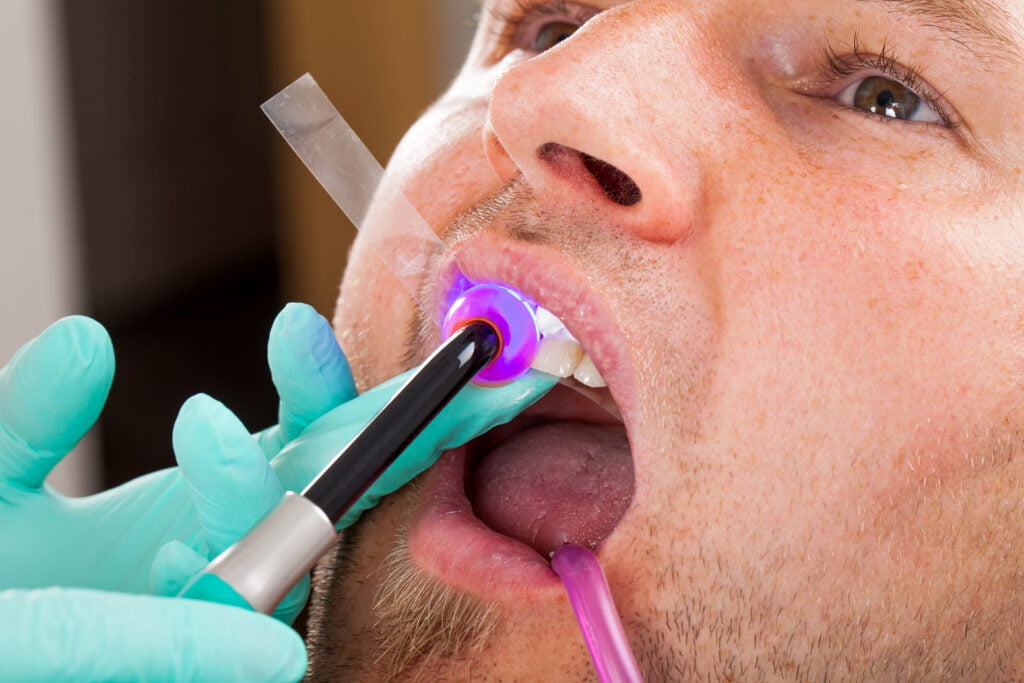01 Jul Are composite bondings a good idea?
Posted by: Dental Nurse NVQ Level 3
Medically reviewed by: Dr Peta Leigh | BDS (Melb), BSc (Monash) GDC: 78758 | Award-Winning Cosmetic & Whitening Dentist

The pros and cons of types of composite bonding; Myth-busting for patients
Are composite bondings right for you?
by Willow Tree Dental and Orthodontic Centre on Cosmetic Dentistry, Dental Health and Minimal Intervention
In recent years, there has been a growing trend away from the traditional use of porcelain veneers toward a technique known as ‘composite bonding.’ This method utilises composite resin, a white filling material, to enhance or completely cover teeth in order to enhance smiles. Remarkably, composite resin can serve as a compelling alternative to porcelain, a achieving comparable smile-enhancing results in numerous cases.
Over the past decade, significant advancements have been made in the development of composite resins, particularly in their ability to replicate the natural luster of tooth enamel, which can be maintained through periodic polishing. These materials now often rival, and sometimes even surpass, the aesthetic appeal of porcelain veneers. One key advantage of composite resins is their minimal requirement for enamel reduction. The material can be applied with precision, akin to painting or sculpting, allowing for an exceptionally thin application.
A notable advantage of composite veneers is that they typically do not necessitate the involvement of a dental technician, thereby saving both patients and dentists valuable time and resources. In fact, the cost of composite veneers is approximately 50% lower compared to porcelain veneers, making them a more cost-effective option.
Determining whether composite veneers are the right treatment for you hinges largely on your current dental condition, your budget, and your commitment to maintaining them over time
Already have lots of crowns & anterior fillings?
If you have had lots of previous dental work and a number of existing restorations then composite bondings are likely not the right treatment option for you. While there are some advanced bonding techniques that will adhere composite resin to other dental materials (like porcelain or ceramic), we can’t promise the same bond strength as with bonding to natural tooth tissue.
If you have lots of existing restorations and would like to improve their appearance or shade – you’re usually best to replace them for newer, more modern materials that have different shades, staining and translucencies built into them to provide a really natural result.
Have crooked or crowded teeth?
Composite bondings can be a good treatment to mask some degree of crowding, so it’s most certainly worth an assessment to see. The difficulty comes when the size and shape of the tooth becomes compromised – teeth can sometimes look ‘squeezed in’ or peg-shaped.
If your teeth are severely crowded then a very short course of cosmetic orthodontics might be the best place to start. Alleviating some of the crowding can give your dentist more space to craft a more natural-looking result with composite resin.
Spacing and gaps
Bondings can be the ideal solution to fill generalised spacing and or random gaps. But, if the spaces are too large – you end up with the opposite problem that crowding presents. Spaces that are too big can result in odd sized and shaped teeth, that can often be asymmetrical, which is less than ideal. But, if your spacing a slight or you have mid-line diastema (like Madonna, Lily Aldridge or Lara Stone!) then composite bonding can be a wonderful, cost-effective treatment.
Chipped, broken or uneven edges.
This is where bondings really excel. The handcrafted composite bondings that our cosmetic dentists at Willow Tree Dental create are award-winning! They able to be placed in one day and be so incredibly discreet that you’ll struggle to find the join. They can be a perfect adjunct to a course of orthodontics to really finesse the result and improve an uneven smile line. They too, are the best option for chipped and broken front teeth.
You cannot whiten composite resin
Once your bondings have been placed, you will not be able to improve or change the shade with whitening gels. You will be able to maintain the shade of your natural teeth to match the composite. And, to some degree lighten the tooth under the bonding. But, for the most part, you will not be able to alter the shade of your restorations.
If you would like lighter, brighter teeth, you should complete a course of tooth whitening prior to bonding treatment. It’s important to note, that this should aim to be completed a fortnight before your bondings are placed. This is to prevent something we occasionally see called ‘bounce back‘.
Sometimes, once you’ve achieved your desired shade, your teeth can fall back a shade or two in the immediate time afterwards. This is remedied with an additional night or two of top-up wear. Or, an accelerated whitening appointment in the dental office. You want to ensure you’re happy with your shade and that it is stable before you colour match your restorations.
In Conclusion..
There are few criteria that mean you might benefit from an additional or a different treatment. But generally. Yes! Composite bondings are a good idea.
Advantages of Bondings
- Cost effective.
- Can look more natural that a mouth full of porcelain veneers.
- Require less visits.
- Require little to no tooth preparation or damage to the enamel.
- Can be polished, shaped and amended easily.
Related: 5 Reasons to see a dental hygienist
Join Willow Tree Dental Centre Today for just £75!
Join today as a new patient and have comprehensive dental exam and discuss your aesthetic dental treatment options.

Sorry, the comment form is closed at this time.